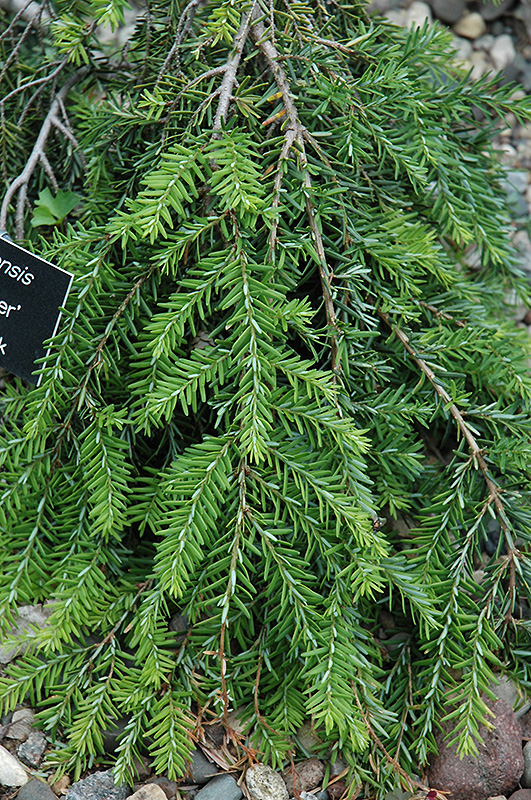Height: 10 feet
Spread: 10 feet
Sunlight:
![]()
![]()
Hardiness Zone: 4
Other Names: Canadian Hemlock, Eastern Hemlock
Description:
A fine evergreen shrub, tall growing spreading with gracefully pendulous branches and fine textured foliage, an unforgettable sight; best used as a solitary specimen; needs organic, acidic soil, adequate moisture and shelter from drying winds
Ornamental Features
Ashfield Weeper Hemlock is a dwarf conifer which is primarily valued in the landscape or garden for its highly ornamental weeping form. It has dark green foliage with bluish-green undersides which emerges light green in spring. The needles remain dark green throughout the winter. The smooth gray bark is extremely showy and adds significant winter interest.
Landscape Attributes
Ashfield Weeper Hemlock is a multi-stemmed evergreen shrub with a rounded form and gracefully weeping branches. It lends an extremely fine and delicate texture to the landscape composition which can make it a great accent feature on this basis alone.
This shrub will require occasional maintenance and upkeep, and usually looks its best without pruning, although it will tolerate pruning. Gardeners should be aware of the following characteristic(s) that may warrant special consideration;
- Insects
Ashfield Weeper Hemlock is recommended for the following landscape applications;
- Accent
- General Garden Use
Planting & Growing
Ashfield Weeper Hemlock will grow to be about 10 feet tall at maturity, with a spread of 10 feet. It has a low canopy with a typical clearance of 1 foot from the ground, and is suitable for planting under power lines. It grows at a slow rate, and under ideal conditions can be expected to live for 50 years or more.
This shrub does best in full sun to partial shade. It does best in average to evenly moist conditions, but will not tolerate standing water. It may require supplemental watering during periods of drought or extended heat. It is not particular as to soil type, but has a definite preference for acidic soils. It is quite intolerant of urban pollution, therefore inner city or urban streetside plantings are best avoided, and will benefit from being planted in a relatively sheltered location. Consider applying a thick mulch around the root zone in winter to protect it in exposed locations or colder microclimates. This is a selection of a native North American species.

